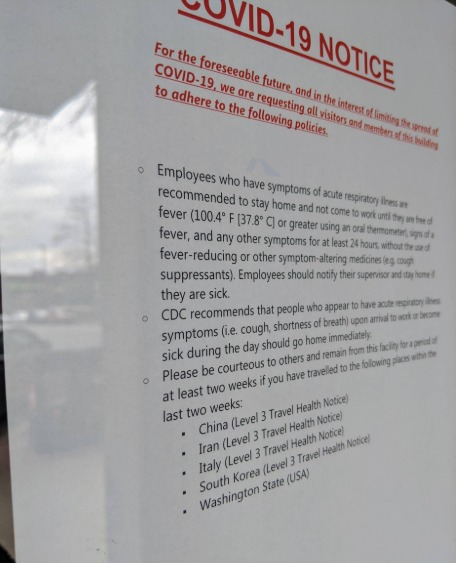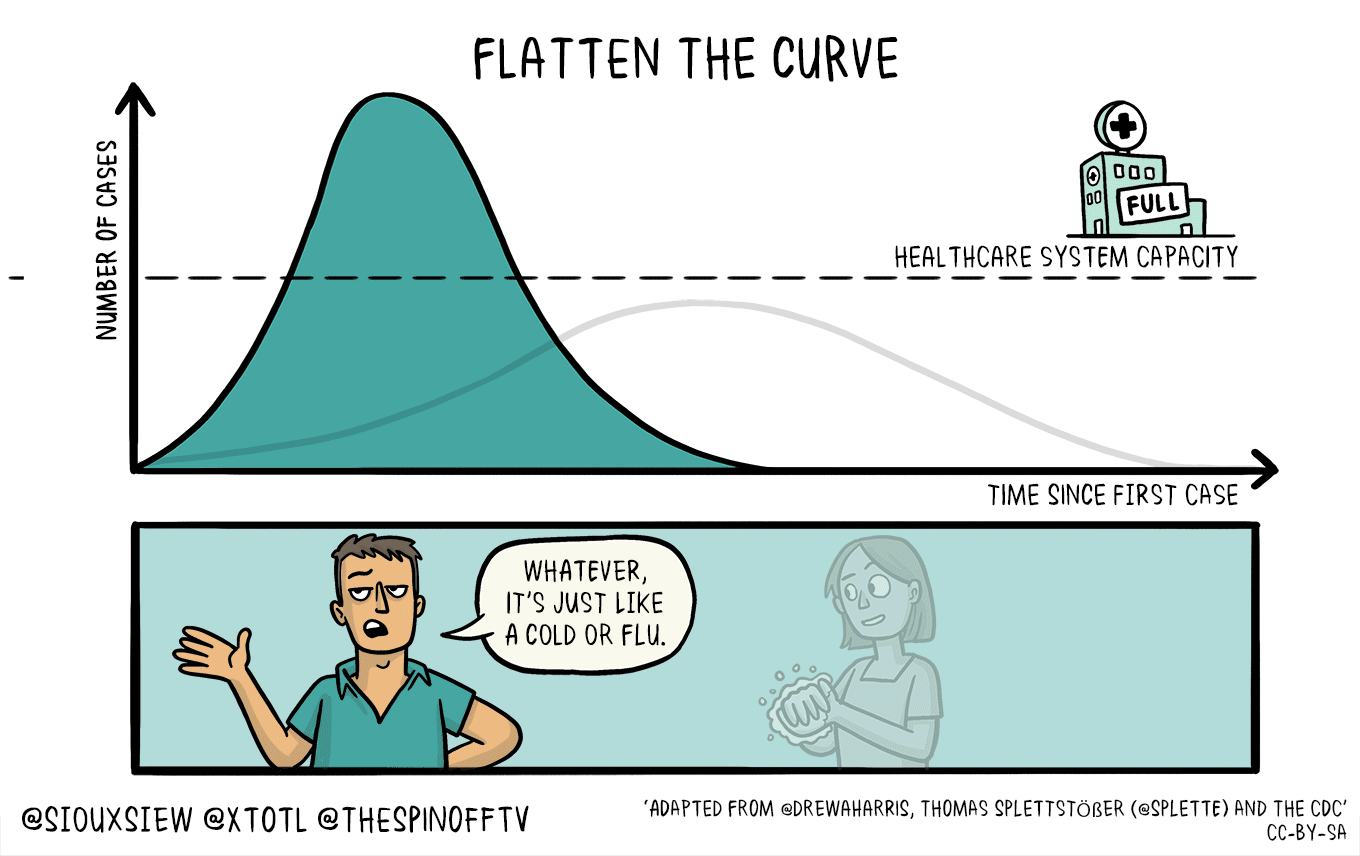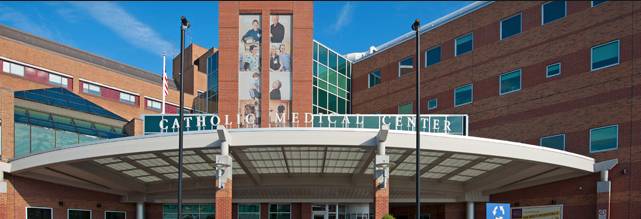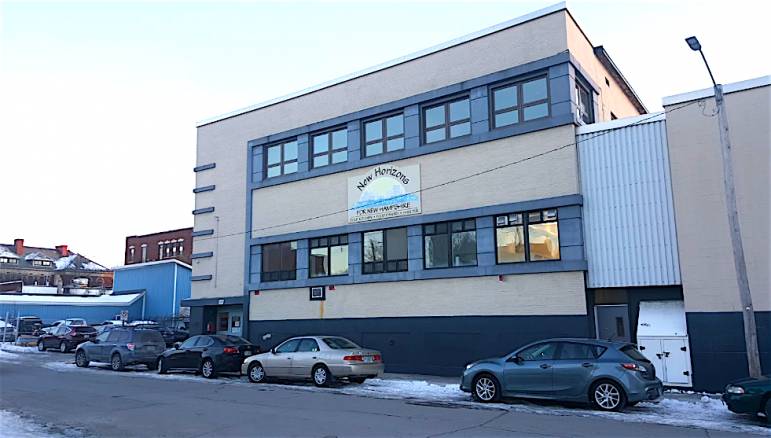
MANCHESTER, NH — A sixth case of COVID-19 has been confirmed by the NH state department of health, that tidbit of local information nestled in our brains amongst the other news coming at us from across the U.S. — the latest updates out of China where it all began; devastation in Italy and other countries buckling under the weight of the disease; disruptions to professional sporting events; athletes and movie stars testing positive; local community events right here in New Hampshire being canceled or indefinitely postponed under a crush of precautionary warnings.
For Phil Alexakos, Manchester Health Department’s Public Health Administrator, preparedness has always been the mission. COVID-19 may present the challenge the city’s public health workers have for decades been preparing to rise to.
“After 9/11 everything changed as a society and in public health. In terms of a response we’ve been talking about a pandemic, even before 9/11 we had some plans that tried to address a medical surge, which has received attention in the context of COVID-19,” Alexakos said.
Within the realm of public health, there is something known as “continuity of operations” — COOP for short — which asks not only individuals but businesses and the government to consider their level of preparedness.
“If your workforce was reduced by 30 percent how would you carry out the essential functions of your business? It’s an exercise in what we absolutely have to do to keep things going. The second part of that is what happens if your facility is gone, something we at the health department got a crash course in back in 2002 when our office burned down,” Alexakos said.
Carrying on, whether you are down manpower or resources, is the crux of this looming epidemic.
“We’ve had different challenges over my 25 years here — you name it we’ve had these possible threats. H1N1 was closest to an impactful pandemic. With influenza, we’re able to develop a vaccine in 8-10 months. The difference with coronavirus is there’s no vaccine,” Alexakos said.
The city health department has been meeting every other month with its health partners, area hospitals and providers, to make sure there are plans for supplies and back-up supplies that can meet every day health needs of the community. Now with the threat of COVID-19 becoming a reality, it’s time to make sure that personal protective equipment is put into practice, and efficient screening is done so as not to overtax hospitals with non-emergency cases.
Guidance on what the public should do and not do will change, says Alexakos, depending on how COVID-19 takes shape.
“We haven’t seen in New Hampshire any ‘community transmission,’ meaning of the six confirmed cases, they all either have a link to an event or travel or another case. What we haven’t seen yet is a case that is unknown exposure. As we do more testing that might become a reality and that changes our approach to what the guidance becomes, what the risks are and what restrictions are considered necessary.”
Alexakos also cautioned that we’re still in the midst of cold and flu season. Not every ailment is going to be COVID-19. So, then, how does someone know the difference? And when should they get tested?
“By Friday the state should be putting out some public messaging on this. If you feel sick, do what you normally do. Call your health provider if you feel ill and your symptoms are not being controlled by normal cold/cough medicine, then stay home and limit your contact to others,” Alexakos said. “But if you get a fever, a sore throat and especially, shortness of breath, let your provider know and they will tell you if you’re a candidate for screening.”
Key here is to make sure you call someone before you show up at the emergency department or doctor’s office.

“If they show up and are symptomatic and the facility you go to is not ready to receive you, that puts others in jeopardy. Similarly, if you call 911 there’s a script now that all 911 operators have, to screen callers for those three symptoms. It’s to make sure our first-responders are prepared, as we need to make sure they take precautions, too,” Alexakos said. “As you can see there are a lot of pieces to this, and we are learning from what other countries are going through. We need to make sure our hospitals are being used for those most ill and make sure we don’t put them out of commission by those who aren’t that sick.”
Alexakos reiterated that those who are older than 60 should minimize travel or avoid large gatherings. “We know from what we’ve seen, those are the groups with the highest complications or worst outcomes,” he said.
He and his staff have been working around the clock to help “flatten the curve” a popular term right now that means slowing down the disease so we there is not a sudden surge that overwhelms medical resources.
To those who say, ‘It’s just the flu, don’t panic,’ Alexakos would say that the flu is bad enough, but COVID-19 is no flu, and something we’ve not seen before.
“We underestimate the annual impact of the flu, so it’s not really something to take lightly. But the other thing is that this isn’t behaving in the same way we see the flu behave. Our bodies have seen most of the flu strains out there. But we don’t have any immune experience with this organism. That’s where the community-mindedness comes in. Maybe you will get it and won’t feel too bad, maybe you can take something and even feel well enough to go to work. But you don’t know if the person you’re working next to is on chemo, or if they live with someone who’s health is already compromised,” Alexakos says. “Maybe it’s not bad for you, but you need to think beyond yourself in a time like this.”
Below is a round-up of more public information, how area hospitals and the homeless shelter are preparing, and a Q&A about coronavirus with the Centers for Disease Control:

CMC implements screenings at hospital entrances
Effective 12 Noon, Friday, March 13, Catholic Medical Center will be screening all patients and visitors who come to the hospital. In addition, we are limiting access points to the front entrance and the sky bridge. Anyone coming to the hospital can expect to be asked about whether they have a fever and cough. Symptomatic patients coming for an appointment or procedure will be addressed on a case by case basis. Any visitor who reports symptoms will be asked to leave.
The measures are out of an abundance of caution to help protect CMC patients and employees, as well as the public. Out of respect for the CMC community, we are asking friends and family of hospital patients to be our partners and help us limit the potential exposure to coronavirus (COVID-19). Please minimize, whenever possible, the number of people visiting a patient and make sure those visitors are healthy. Visiting hours are also being restricted for the time being from 8 AM—8 PM.
CMC would like to thank the public for their cooperation as we work to keep the community calm, informed and healthy.
Call Dartmouth-Hitchcock Hotline before going to the Emergency Department
For Dartmouth-Hitchcock Patients who are experiencing fever, cough, or shortness of breath or are concerned about potential exposure to COVID-19, should first call the D-H COVID-19 hotline at 603-650-1818 for screening and, if appropriate, scheduling testing. This should take place as a first step before visiting the Emergency Department or provider office.
Contact NH 2-1-1 for information and resources on COVID-19
New Hampshire residents who have concerns about COVID-19 can call 2-1-1. Information and referral specialists are on hand to direct people to the appropriate resources. NH 2-1-1 is available 24 hours a day, 365 days a year. Outside of New Hampshire, call 1-866-444-4211.
Hospitals around the state are prepared
NH Hospital Association Executive VP Kathy Bizarro-Thunberg says New Hampshire hospitals are ready to meet the needs of all patients in our state including situations involving high threat infectious diseases such as COVID-19 and influenza. Continuous preparedness efforts in collaboration with our local, state and federal partners to respond to these types of events are an integral part of hospital readiness.
Although there have been reports of resources at Italian hospitals being depleted due to the crush of need for beds and respirators, NH’s hospitals offer the following protocols and assurances.
General:
- Not all individuals that have been diagnosed with COVID-19 or other respiratory infections need to be hospitalized.
- If hospitalization is not medically necessary, the individual can be taken care of at home (if appropriate)
- If a person is admitted to a hospital as a known or suspected COVID-19 patient, the patient can be placed in a single-person room with the door closed and with a dedicated bathroom.
- If a patient needs advanced care that may involve the virus getting into the air, then an isolation room with negative pressure environment should be used.
New Hampshire hospitals and isolation capacity:
- Hospitals are following NH Division of Public Health Services to Identify, Isolate and Inform
-
- Identify: know the symptoms and other factors that could point to a suspect case of COVID-19
- Isolate: if a hospital suspects that someone meets the criteria for COVID-19, they should move the patient to an appropriate setting away from other patients
- Inform: hospitals will contact NH Division of Public Health Services if they believe they have a suspect case.
-
- All hospitals in our state have isolation capacity. That can range from private rooms to fully outfitted with negative pressure capabilities.
- Hospitals can also add enhanced isolation capacity by utilizing portable isolation units that can transform a private room into a negative pressure isolation room.
- All hospitals are following CDC and NH Division of Public Health Services recommendations on patient placement and proper personal protective equipment.
- To date, hospitals do not have any COVID-19 confirmed or presumptive positive patients in their facilities
University System of NH system-wide response to COVID-19
A March 13 advisory for those with students returning from spring break who are attending UNH, Keene State College, Plymouth State University and Granite State College.
In short (click here for the entire message)
Students who did not spend spring break in designated higher-risk areas, who do not show flu-like symptoms and have not come in contact with people suspected or known to be infected, will be allowed to return to campus after spring break. However, they are not required to return to campus during this two-week period. Since many students will be restricted from returning, most instruction during the two-week period will be conducted through online or other remote methods.
There will be some variations from campus to campus. Plymouth State University, which returns from spring break on Monday, March 16, and which has fewer returning students from higher-risk areas, will have fewer restrictions on campus life and more class-based instruction. UNH, which returns from spring break on March 23, and which has many more students who are residents of higher risk states, will have no class-based instruction during this two-week period and highly restrictive campus life. All classes at UNH will be delivered remotely during this two-week period, access to campus by students who do not need to quarantine will be restricted, and student campus activities will be cancelled. Reflecting its particular circumstances, the Keene State College campus will be somewhat less restricted than UNH, but more restricted than PSU. Most of its courses will be delivered remotely. For specific information about how each campus is adapting this general response to its particular circumstances, please consult their websites directly.
Prior to this two-week period, during spring break, we will not close our residential campuses. Since we believe our New Hampshire campuses may in fact be safer environments than potentially higher risk areas that many of our students might otherwise travel to, we are making food service and housing options available to our students during spring break at no additional cost. We want to ensure that any student who feels safer on campus or does not have other residential options has a safe place to live during the break and transition period.

FIT/New Horizons Contingency Plan for the homeless
The following action steps have been taken by Families in Transition/New Horizons homeless shelter in advance of possible COVID-19 cases.
- Created a COVID-19 Taskforce which is meeting on a weekly basis and is continually monitoring the latest news and updates on the pandemic.
- Developed a dynamic Response Plan, which includes recommendations and best practices from various local and federal sources, and updating as new information becomes available.
- Taking actions to educate participants and staff on preventive measures and ways that they can help to maintain a healthy environment.
- Implementing best practices to prevent the spread of the virus including increasing cleaning protocols and access to cleaning supplies across the agency.
- Establishing regular communication with health officials and health professionals regarding isolation locations should a case be detected.
Department of Corrections screening process
All visitors/volunteers to any NH Correctional facility will be required to fill out a screening questionnaire.
Also, on Thursday, it was announced that Superior Court jury trials will be suspended for 30 days.
March 13: The New Hampshire Department of Corrections has issued the following statement:
“The NHDOC is working closely with the Joint Information Center at the New Hampshire Homeland Security and Emergency Management’s Incident Planning and Operations Center for the most up-to-date information regarding COVID-19. We are following the guidelines of the CDC and DHHS with regards to prevention and preparedness and are monitoring the responses of state correctional facilities nationwide based on COVID-19 confirmed cases in their states and New Hampshire county correctional facilities. Our efforts are to ensure we are keeping ahead and astride of appropriate operational adjustments to maintain the health and wellness of our staff and residents while balancing the benefits of family visits for our residents. As there are currently only direct contact positive cases in New Hampshire, we continue to allow visitation, however should this change, to include cases that were transmitted through community contagion and confirmatory test numbers increase, reassessment of the situation may result in cancellation of visitation until further notice. We are constantly examining our preparedness plan. We are being responsive by taking precautions to try to prevent COVID-19 exposure from happening in our facilities. “
Just the Facts on COVID-19 from the Centers for Disease Control
Why is it called COVID-19?
On February 11, 2020, the World Health Organization announced an official name for the disease that is causing the 2019 novel coronavirus outbreak, first identified in Wuhan China. The new name of this disease is coronavirus disease 2019, abbreviated as COVID-19. In COVID-19, ‘CO’ stands for ‘corona,’ ‘VI’ for ‘virus,’ and ‘D’ for disease. Formerly, this disease was referred to as “2019 novel coronavirus” or “2019-nCoV”.
How contagious is COVID-19?
Disease experts estimate that each COVID-19 sufferer infects between two to three others. That’s a reproduction rate up to twice as high as seasonal flu, which typically infects 1.3 new people for each patient.
What makes it different from a flu?
A novel coronavirus means it’s a new coronavirus that has not been previously identified. The virus causing coronavirus disease 2019 (COVID-19), is not the same as the coronaviruses that commonly circulate among humans and cause mild illness, like the common cold. There are many types of human coronaviruses including some that commonly cause mild upper-respiratory tract illnesses. COVID-19 is a new disease, caused by a novel (or new) coronavirus that has not previously been seen in humans. The name of this disease was selected following the World Health Organization (WHO), following best practices for naming of new human infectious diseases
How serious is COVID-19?
COVID-19, the illness caused by coronavirus, proves deadly in around 3.5 percent of confirmed cases. While this is not the same as its mortality rate, given many people may be infected but not realize it, it is significantly higher than seasonal flu, which typically kills 0.1 percent of patients.
“There is still considerable uncertainty around the fatality rates of COVID-19 and it likely varies depending on the quality of local healthcare,” said Francois Balloux, Professor of Computational Systems Biology at University College London.”That said, it is around two percent on average, which is about 20 times higher than for the seasonal flu lineages currently in circulation.”
What is ‘community spread’?
More cases of COVID-19 are likely to be identified in the United States in the coming days, including more instances of community spread. It’s likely that at some point, widespread transmission of COVID-19 in the United States will occur. Widespread transmission of COVID-19 would translate into large numbers of people needing medical care at the same time.
Schools, childcare centers, and workplaces, may experience more absenteeism. Mass gatherings may be sparsely attended or postponed. Public health and healthcare systems may become overloaded, with elevated rates of hospitalizations and deaths. Other critical infrastructure, such as law enforcement, emergency medical services, and sectors of the transportation industry may also be affected. Healthcare providers and hospitals may be overwhelmed.
Is there a cure?
At this time, there is no vaccine to protect against COVID-19 and no medications approved to treat it. Nonpharmaceutical interventions would be the most important response strategy, which include rest, extra fluids, washing your hands, covering your mouth when you cough or sneeze, self-isolation, Tylenol and cough medicine.
How did COVID-19 start?
Coronaviruses are a large family of viruses that are common in people and many different species of animals, including camels, cattle, cats, and bats. Rarely, animal coronaviruses can infect people and then spread between people such as with MERS-CoV, SARS-CoV, and now with this new virus (named SARS-CoV-2).
The SARS-CoV-2 virus is a betacoronavirus, like MERS-CoV and SARS-CoV. All three of these viruses have their origins in bats. The sequences from U.S. patients are similar to the one that China initially posted, suggesting a likely single, recent emergence of this virus from an animal reservoir.
Early on, many of the patients at the epicenter of the outbreak in Wuhan, Hubei Province, China had some link to a large seafood and live animal market, suggesting animal-to-person spread. Later, a growing number of patients reportedly did not have exposure to animal markets, indicating person-to-person spread. Person-to-person spread was subsequently reported outside Hubei and in countries outside China, including in the United States. Some international destinations now have apparent community spread with the virus that causes COVID-19, as do some parts of the United States. Community spread means some people have been infected and it is not known how or where they became exposed. Learn what is known about the spread of this newly emerged coronaviruses.







